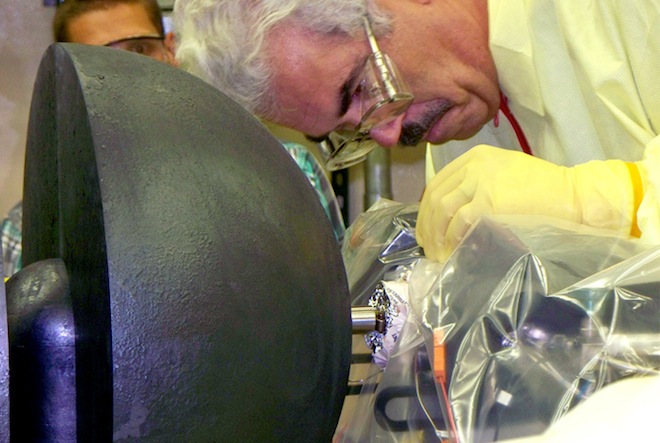Researchers at NASA’s Glenn Research Center, Los Alamos National Laboratory and National Security Technologies LLC (NSTec) have tested a mini prototype nuclear reactor engine that could power up deep space satellites and spaceships in the future.
The nuclear engine is designed based on a Sterling engine which is capable of using a 50 pound nuclear uranium as a heat source.
Sources say that this is the first demonstration of a space nuclear reactor system to produce electricity in the United States since 1965, and the experiment confirms basic nuclear reactor physics and heat transfer for a simple, reliable space power system.
A Stirling engine is a relatively simple closed-loop engine that converts heat energy into electrical power using a pressurized gas to move a piston. Using the two devices in tandem allowed for creation of a simple, reliable electric power supply that can be adapted for space applications.
Sources say that this is the first demonstration of a space nuclear reactor system to produce electricity in the United States since 1965, and the experiment confirms basic nuclear reactor physics and heat transfer for a simple, reliable space power system.
A Stirling engine is a relatively simple closed-loop engine that converts heat energy into electrical power using a pressurized gas to move a piston. Using the two devices in tandem allowed for creation of a simple, reliable electric power supply that can be adapted for space applications.
NASA has previously used plutonium-238 to power deep space probes in Voyager, Pioneer and Cassini mission. Watch the video by Los Alamos National Laboratory about the nuclear reactor system for deep space exploration.
A nuclear Sterling engine generates power with uranium which would help reduce the need for plutonium-238. If such safe and reliable nuclear engines are created, it will be possible for humans to reach deeper into the vast space. This will take the space research to great heights.
Source: NASA
Related posts:
